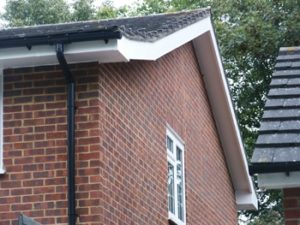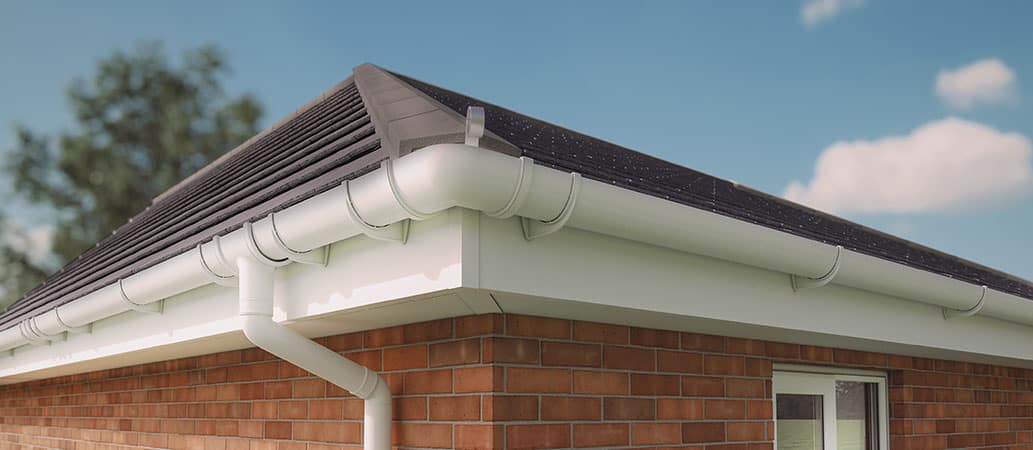Understanding Fascia and Gutter Replacement: A Comprehensive Guide
When it concerns home maintenance, numerous house owners typically neglect the significance of fascia and rain gutters, in spite of their important role in safeguarding the structural integrity of a home.
This article delves into the complexities of fascia and gutter systems, describing their functions, the indications indicating a need for replacement, and the actions included in the replacement procedure.

What is Fascia?
Fascia refers to the horizontal board that runs along the edge of a roof, serving as a barrier between the roofing system and the external environment. Usually made from wood, vinyl, or aluminum, fascia plays a significant function in:
- Supporting the lower edge of the roof
- Providing a completed want to the eaves
- Securing the underlying rafters and insulation from weather elements
- Functioning as an installing point for rain gutters
The condition of the fascia is important, as damaged or decomposing fascia can result in water seepage, mold growth, and comprehensive structural damage.
Understanding Gutters
Rain gutters are the channels designed to gather and reroute rainwater from the roofing far from the house's foundation. Like fascia, gutters are vital for maintaining a home's stability. Correctly working seamless gutters avoid:
- Water damage to the foundation
- Soil erosion around the home
- Basement flooding
- Mold and mildew development
Generally made from products such as aluminum, copper, or vinyl, seamless gutters should be frequently kept to ensure they perform successfully.
Indications of Fascia and Gutter Damage
Homeowners must be watchful for indications that indicate the requirement for fascia and gutter replacement. Typical indicators include:
Fascia Damage Signs
- Rotting or Crumbling: This usually arises from extended water exposure.
- Drooping: A bowing fascia could indicate that it no longer provides sufficient assistance.
- Visible Mold: Presence of mold shows extreme wetness.
- Fractures or Holes: Structural integrity is compromised with considerable cracks.
Gutter Damage Signs
- Rust or Corrosion: Particularly in metal rain gutters, rust shows innovative wear and tear.
- Separation: If gutters are pulling away from the fascia, they require urgent attention.
- Puddles Around the Foundation: This can show that gutters are not directing water appropriately.
- Overflowing Water During Rain: This represents obstructions or misalignment.
The Importance of Fascia and Gutter Replacement
Ignoring fascia and gutter maintenance can cause numerous costly problems, including:
- Foundation Damage: Water pooling can erode the structure.
- Roofing Damage: Water can back up into the roofing materials, triggering leakages.
- Interior Water Damage: This can cause damaged drywall, insulation, and encourage mold growth.
Changing fascia and gutters can assist alleviate these concerns while guaranteeing a home's aesthetic appeal.
Steps for Fascia and Gutter Replacement
1. Assessment
The initial step is a thorough assessment of the existing fascia and gutter systems. This often involves inspecting for indications of wear, measurement, and product decision.
2. Elimination
The old fascia and gutter systems need to be carefully removed. This may involve:
- Detaching seamless gutters from the fascia.
- Getting rid of any screws or nails holding the fascia in location.
- Taking care to prevent damage to the roof or surrounding locations.
3. Installation of New Fascia
As soon as the old products are removed, the next action includes:
- Installing brand-new fascia boards, guaranteeing they are level and appropriately lined up.
- Sealing any joints or seams to avoid water seepage.
4. Gutter Installation
Following the fascia replacement, brand-new seamless gutters can be set up by:
- Securing the gutters to the new fascia utilizing brackets.
- Making sure the gutter system has an adequate slope for effective water circulation.
- Adding downspouts to direct water far from the foundation.
5. Ending up Touches
After the installation, applying a protective surface to the fascia might be useful, particularly for wooden boards.
DIY vs. Professional Help
While some homeowners might think about tackling fascia and gutter replacement by themselves, it is frequently advised to hire specialists due to:
- The dangers connected with working on roofing systems.
- The knowledge required for proper installation.
- Access to better quality products.
Pros and Cons of Professional Help
| Pros | Cons |
|---|
| Expertise and experience | Higher cost |
| Quality and guarantee assurances | Scheduling time constraints |
| Performance in completing the task | Less individual control over the process |
Regularly Asked Questions (FAQs)
1. How frequently should fascia and seamless gutters be changed?
Normally, fascia and seamless gutters can last in between 20-50 years, depending on the products utilized. Routine maintenance can extend this life. Assessments must be performed annual, particularly after extreme weather.
2. How can I maintain my fascia and gutters?
Regular evaluations and cleanings are vital. Property owners should eliminate debris from gutters, check for blockages, and examine for any indications of damage. Making sure appropriate drain away from the home can likewise assist.
3. What products are best for fascia and rain gutters?
- Fascia: Common products include wood, vinyl, and aluminum, with aluminum frequently being preferred for its sturdiness.
- Rain gutters: Options include aluminum, copper, PVC, and steel. Aluminum is popular due to its light-weight nature and resistance to rust.
4. Can I set up gutters without replacing fascia?
While it is possible to replace rain gutters without changing fascia, it is advisable to assess the condition of the fascia. If the fascia is harmed, it's best to replace both concurrently to guarantee a waterproof system.
Appropriately maintaining fascia and rain gutters is essential for the longevity of a home. By understanding the signs that show a need for replacement and the actions included in the process, house owners can take proactive procedures to safeguard their investment. Regular assessments, maintenance, and prompt replacements guarantee peace of mind, safeguarding against prospective water damage and ensuring that the home remains aesthetically pleasing.
